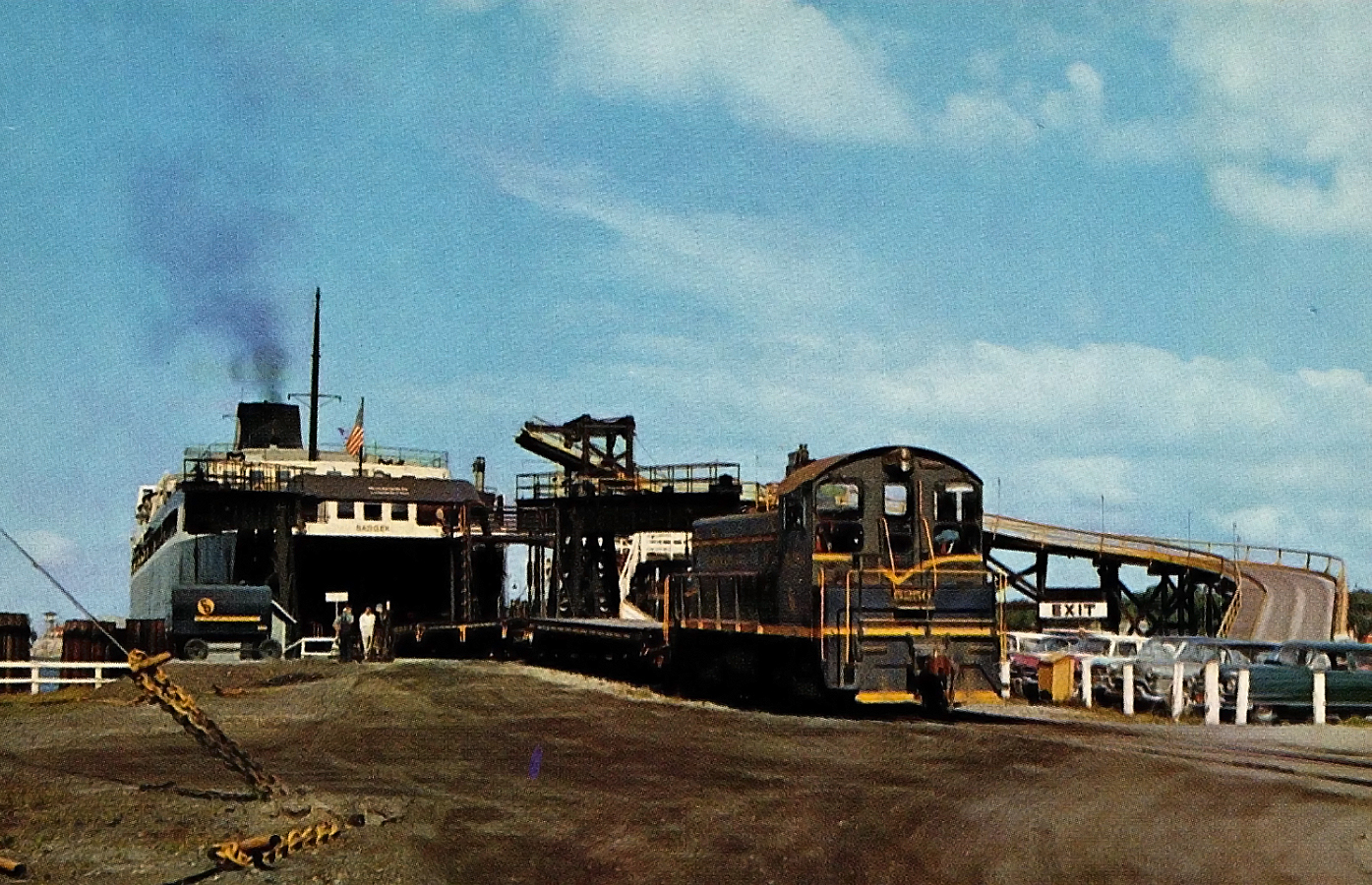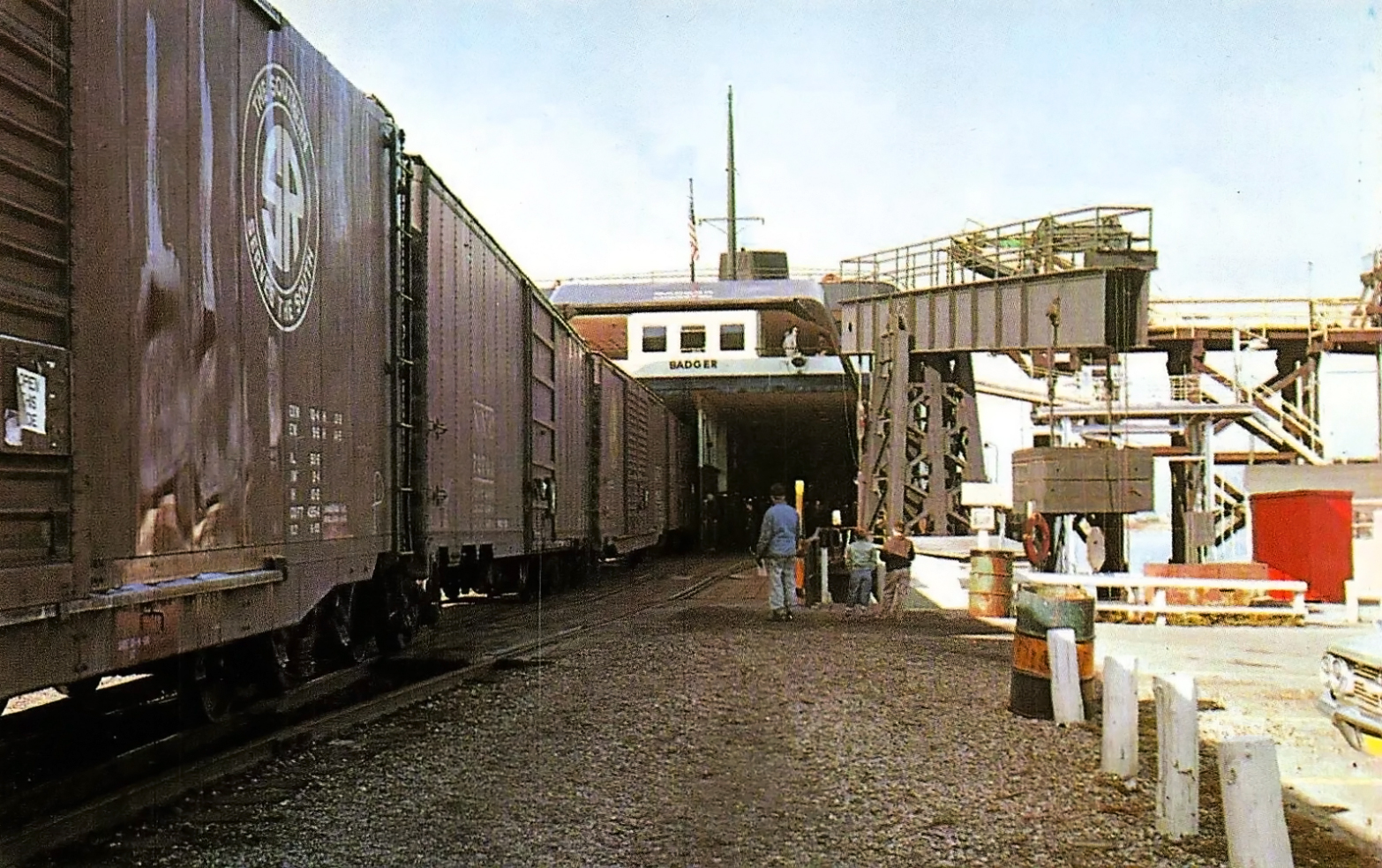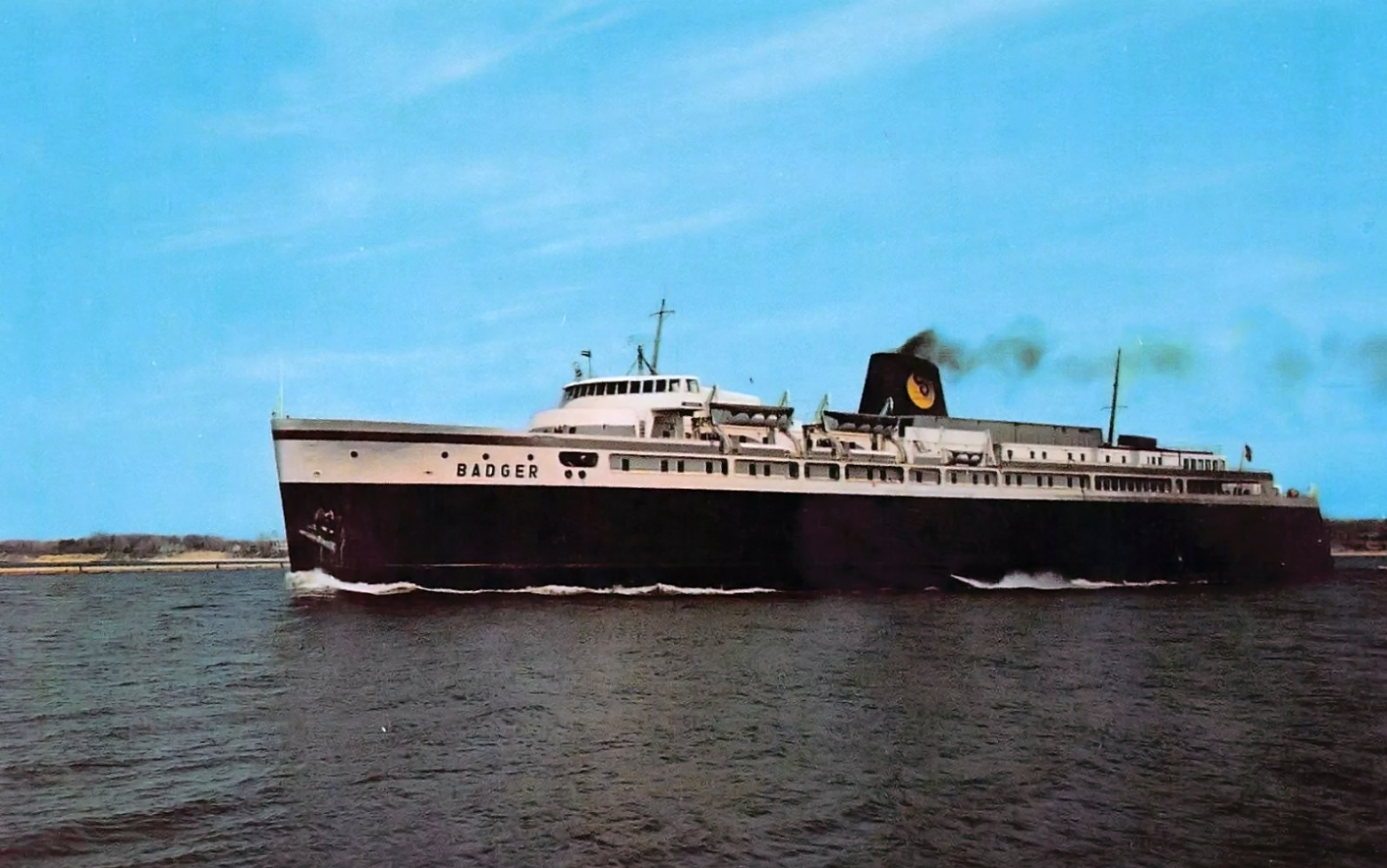S.S. Badger (Car Ferry): History, Photos, Specs
Published: February 1, 2025
By: Adam Burns
Nestled between the beautiful shores of Ludington, Michigan and Manitowoc, Wisconsin, a grand vessel by the name of the S.S. Badger continues to make the 62-mile journey across Lake Michigan, carrying passengers, vehicles, and memories.
This iconic car ferry, steeped in history and tradition, not only provides essential transit services but also represents a bygone era of maritime travel, earning it a beloved place in the hearts of travelers and locals alike. The Badger has operated across the lake since entering service for the Chesapeake & Ohio Railway in 1953.
Remarkably, it stands as the final coal-powered passenger vessel still in service on the Great Lakes, earning the designation of a National Historic Landmark on January 20, 2016. Named in homage to the athletic teams of the University of Wisconsin, known as the Badgers, the ferry operates seasonally from May to October.
History
The Badger was built in 1952 by the Christy Corporation in Sturgeon Bay, Wisconsin, along with its twin, the SS Spartan, which was named after the Michigan State University mascot.
Designed with a reinforced hull to break through ice, the Badger originally ferried railroad cars, passengers, and vehicles across the lake throughout the year. Nowadays, the ferry operates between the eastern and western parts of US 10.
The Badger was launched on September 6, 1952, and entered service for the Chesapeake & Ohio on March 21, 1953. The railroad had acquired the Ludington-based rail car ferry operations after purchasing the Pere Marquette Railway in 1947.
The C&O was an extremely profitable coal road serving mines through southern West Virginia, and eastern Kentucky. Its main line linked Norfolk, Virginia with Cincinnati and Chicago.
Due to its success, it continued modernizing the PM's former ferry operations through the 1950s when such services were still generally profitable for railroads.
During its heyday, the Badger was part of a fleet of 14 ferries that crisscrossed Lake Michigan. Over the years, as freight transportation evolved and bridges materialized, this fleet gradually diminished.
On July 1, 1983, the Chessie System ended its remaining car ferry services by selling the steamers Badger, Spartan, and City of Midland 41 to Glen F. Bowden of Ludington, who set up the Michigan–Wisconsin Transportation Company to keep operations running.
A Journey Through Time and Water
Today's S.S. Badger trips are more than mere crossings; they are experiential journeys filled with nostalgia and tranquility. As the ship departs from the harbor, passengers feel the slow yet powerful rhythm of its engines reverberating beneath them.
The journey, which lasts about four hours, offers passengers an opportunity to unwind, disconnect from the hustle of modern life, and embrace a leisurely passage.
On board, passengers are treated to various amenities, echoing the luxurious days of yore. The Badger boasts comfortable lounge areas, delicious cuisine in the cafeteria, a Starbucks coffee shop, children's play areas, a movie lounge, and a museum that narrates the ferry’s own storied past.
Travelers can walk the decks, breathe in the fresh lake air, and, if lucky, witness a breathtaking sunset that paints the Lake Michigan horizon with surreal hues.
The ship maintains its vintage charm, with much of its original 1950s design and decoration intact. This includes wood-paneled interiors and art deco-inspired fixtures that transport passengers back in time, providing a unique contrast to contemporary modes of travel.
Whether aboard for nostalgia, marine admiration, or simple pleasure, passengers find themselves enveloped in a sense of communion with history.
Environmental Stewardship and Challenges
The Badger, while celebrated for its legacy, faced scrutiny over its environmental impact due to its coal-fired propulsion system. Historically, the ferry discharged coal ash directly into Lake Michigan, a practice that contributed to its operational challenges in an age increasingly concerned with environmental conservation.
Responding proactively to these concerns, owners of the vessel undertook significant efforts to retrofit the vessel and minimize its environmental footprint. In 2015, a new ash retention system was installed, ensuring coal ash is contained and disposed of responsibly on shore, meeting the environmental standards of the Environmental Protection Agency (EPA). These initiatives illustrate the commitment to preserving the ferry’s operational legacy while respecting the integrity of Lake Michigan’s ecosystem.
The Future
Preserving the operational future of the S.S. Badger is a task that echoes the ship's journey itself—a balance of honoring history while innovating for the future. Today, Lake Michigan Carferry Service, the company that operates the ship, is committed to this balance, ensuring the vessel remains both a cherished historical artifact and a viable means of modern transportation.
Looking forward, discussions around sustainable propulsion alternatives continue as part of the ship’s long-term operational planning. Potential shifts to natural gas, biofuels, or hybrid systems are investigated to match modern expectations of sustainability and efficiency without compromising the vessel’s historical authenticity.
| Specification | Details |
|---|---|
| Tonnage | 4,244 Gross Tons |
| Displacement | 6,650 Tons |
| Length | 410 feet, 6 inches |
| Beam | 59 feet, 6 inches |
| Height | 106 feet, 9 inches |
| Depth | 24 feet |
| Decks | 2 passenger, 2 vehicle |
| Fuel/Power | Steam (coal-fired) |
| Propulsion | Two four-cylinder compound steam engines (Skinner Unaflow) producing 7,000 hp; four water-tube type D boilers (Foster-Wheeler) producing 470 psi |
| Speed (Max) | 21 kots |
| Speed (Cruise) | 16 kots |
| Capacity | 620 passengers/180 automobiles |
| Crew | 50–60 |
The S.S. Badger is more than a ferry - it is a testament to the endurance of maritime tradition, a bridge connecting two shores, and a symbol of rich regional heritage. Its presence on Lake Michigan’s waters reflects resilience, adaptation, and the spirit of shared journeys.
Whether for the love of history, the allure of travel, or a step back in time, the vessel remains a unique and cherished chapter in the ongoing story of Great Lakes maritime heritage, welcoming all aboard for the shared journey of tomorrow.
Recent Articles
-
New Mexico Railroad Museums: A Complete Guide
Apr 23, 25 02:25 PM
The enchanting state of New Mexico, known for its vivid landscapes and rich cultural heritage, is home to a number of fascinating railroad museums. -
New Hampshire Railroad Museums: A Complete Guide
Apr 23, 25 02:11 PM
New Hampshire, known for its breathtaking landscapes, historic towns, and vibrant culture, also boasts a rich railroad history that has been meticulously preserved and celebrated across various museum… -
Minnesota Railroad Museums: A Complete Guide
Apr 22, 25 12:17 PM
The state of Minnesota has always played an important role with the railroad industry, from major cities to agriculture. Today, several museums can be found throughout the state.


